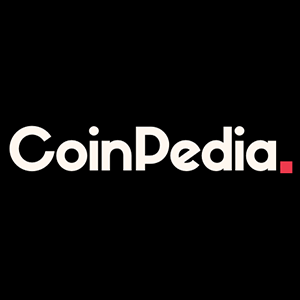Summary Bit Mining's pivot to a Solana treasury strategy introduces speculative upside, especially if SOL rallies and the company executes its planned crypto purchases. Despite declining revenues, Bit Mining has improved operational efficiency, narrowed losses, and deleveraged its balance sheet, but ongoing dilution remains a key risk. BTCM trades below book value and at modest sales multiples, positioning it as a high-risk, leveraged crypto proxy if Solana outperforms in this bull cycle. Investors should be cautious of negative operating margins, liquidity constraints, and heavy dilution, but BTCM offers asymmetric upside for risk-tolerant crypto equity investors. Bit Mining Limited (BTCM) is one of the lesser-covered Bitcoin ( BTC-USD ) mining companies in the industry, but has gained investor attention since the recent adoption of a corporate Bitcoin treasury strategy last December and, more recently, a planned pivot into Solana ( SOL-USD ) treasury strategy. Crypto treasury strategies have been one of the latest financial engineering tools to attract crypto-aligned capital, ever since Strategy ( MSTR ) made that first-mover leap about four years ago. Hundreds (if not thousands) of publicly traded companies (even non-Bitcoin-native companies and, in some cases, non-technology companies) have adopted a crypto-backed balance sheet. Like every other Bitcoin treasury company I've covered, I'll take a look at the Bit Mining's underlying business (if there is any), and analyze the balance sheet to gauge liquidity risk, prior debt and equity raises, and to understand the potential dilution risk or upside as an investor, and finally compare the company's market valuation to the underlying assets in the corporate treasury and identify the discount or premium to the underlying asset. Issuing equity at market or ATM offerings and using the proceeds for a treasury has been the default fundraising option for most companies pursuing the corporate treasury strategy. This comes with dilution risk for investors; therefore, an objective due diligence on the business model, financing structure, and treasury composition is an absolute necessity. Bit Mining Limited: Company Overview Bit Mining Limited has been around for a while, but remained relatively less covered compared to most of the other mining peers. And the fact that the company has been relatively unknown presents some fresh upside for investors if the company executes both its crypto mining and related businesses well, and the crypto market maintains momentum, thus re-rating the crypto assets in its treasury. There has always been this recurring pattern in crypto market cycles where a new entrant or recently de-SPACed miner breaks into the spotlight and gains significant market valuation in a crypto bull market. A good example is Cipher Mining ( CIFR ), which went public via SPAC in 2021 and despite being a relatively late entrant, saw its valuation swell during the 2021 crypto bull run, purely on the strength of future capacity projections and macro tailwinds, not because of any extraordinary technological edge at the time. I think it is easier for Bitcoin miners to break into the spotlight in the Bitcoin mining industry compared to other tech sectors, like AI, where a cutting-edge product would be the minimum threshold for such breakthrough. Mining is often a timing game, not a tech breakthrough game. Bit Mining isn't exactly a new Bitcoin mining company, but its relatively unknown status puts it in the same category as a new entrant miner with the potential for a bull market re-rating. Bit Mining was formerly a Chinese online sports lottery company that operated under the brand name 500.com. The company entered the crypto mining business in December 2020, and following that business pivot, there was a rebrand from 500.com to Bitcoin Mining Limited in early 2021. The rebrand was also followed by the exit of mining operations from China, following the crypto mining ban in China in 2021. Bit Mining now runs its facilities in the U.S. and Africa. Bit Mining has active operations in crypto mining, data center operations, and mining machine manufacturing. All the business segments are currently still operational and revenue-generating. Bit Mining currently operates around 133.5 MW total active power across its facilities, with a significant portion of this capacity dedicated to hosting services, while the remainder supports the company's self-mining operations. These facilities are located in Ohio (82.5 MW) and in Ethiopia, East Africa (51 MW). The East Africa expansion is ongoing, and some of the total 51 MW capacity at the Ethiopia data centers were acquired just last week . This ongoing and active investment in the underlying Bitcoin mining business is the first clear indication that Bit Mining isn't planning to become a pure-play crypto treasury company. I believe Bit Mining's ongoing capital deployment in the underlying Bitcoin mining business is a point worth highlighting. As we go further in this article, a peer comp will show why the fact that there is still ongoing investment and expansion in the Bitcoin mining business, despite the Solana strategy pivot, is an undervalued signal of strategic intent. Bit Mining's other business segments include the manufacture of ASIC mining hardware in collaboration with its fully-owned subsidiary Bee Computing , primarily used in-house. The mining hardware built by Bit Mining is mainly designed for alternative PoW cryptocurrencies like Dogecoin ( DOGE-USD ), Litecoin ( LTC-USD ), and Ethereum Classic ( ETC-USD ). The mining operations utilizing this hardware generated a significant $4.5 million in revenue from DOGE/LTC production in Q4 2024, notably surpassing their Bitcoin mining and even data center service fee revenues for that period which generated $0.3 million and $3.8 million respectively. Total revenue for Q4 FY24 was $8.8 million. Bit Mining released its unaudited Q4 FY24 and full year FY24 results earlier this year, but the full-year results were formally filed in the 20F with the SEC more recently. And for this piece, I'll focus more on the full-year result for a more holistic and comprehensive view of the company's performance over an extended period, thus smoothing out any quarterly fluctuations that might misconstrue the company's broader financial trend. Bit Mining: A Look at Fiscal Year 2024 Financials Bit Mining Limited has experienced a continuous decline in total revenues over the three-year period presented in the FY24 results. Bit Mining's total revenue has been mainly composed of crypto mining and data center operations. Total revenue declined from $57.03 million in 2022 to $43.1 million in 2023, then further contracted to $33 million last year. Notably, within the revenue composition, crypto mining revenue was the primary driver of the total revenue decline. Crypto mining revenue has declined by ~64% from $46.83 million in 2022 to $17.1 million last year. Revenue breakdown (Company filing) On the other hand, the data center segment initially showed growth in sales, rising from around $10 million in 2022 to $21.54 million in 2023, before declining slightly to $15.83 million last year. Despite last year's contraction in data center revenue, data center services have become a relatively more significant component of the overall revenue mix compared to cryptocurrency mining. Last year's data center revenue ($15,83 million) was almost on par with cryptocurrency mining revenue ($17.1 million), whereas in 2022, mining revenue was almost 5x larger than data center. Bit Mining has narrowed its net losses and reduced major operating expenses [OpEx] despite the declining revenue. The reduced OpEx is naturally expected since a big portion of the sales has been linked to crypto mining operations, which are tied directly to the cost of revenue related to crypto mining, thus the reduced OpEx. It would have been a worrying story and an operational red flag right off the bat without going further into other aspects of the financials if the OpEx trend did not mirror the revenue trend. Operation costs and expenses (Company filing) The total OpEx figures show a nearly 50% decline between 2022 and 2024, dropping from $85.7 million in 2022 to $43.8 million in 2024. Despite the seemingly impressive reduction in OpEx highlighted, it is worth mentioning that total OpEx has remained very high compared to total revenue, and this has caused an ongoing severe margin compression. Operating margins for Bit Mining have been negative for the three consecutive years reported in the financial statement. The gap between total revenue and total OpEx has, however, narrowed over time; it shrank from $28.7 million in 2022 to just $10.8 million in 2024. Statement of operations (Company filing) The cost management has resulted in a positive trend for Bit Mining's profitability, showing a reduction in operating losses. The financial statement shows a strong improvement in the bottom line from a substantial net loss in 2022 of $158.42 million to a net income of $11.92 million in 2024. Note that the $158.42 million bottom line figure in 2022 includes both continuing and discontinued operations. In 2022, the former lottery business was still bleeding significant cash and recognized that massive loss. The loss was substantially reduced in 2023 and then turned into a profit last year, indicating the successful winding down or disposal of these operations. Investors' interest moving forward should, however, focus on Bit Mining's underlying continuing operations. The operating losses in continuing operations themselves have also narrowed. Though net income in continuing operations remained negative, it came down to a manageable level of $7 million as of the 2024 end, compared to 2022 and 2023 figures of $79.4 million and $29.4 million, respectively. This is an indication that Bit Mining's core crypto-related businesses are becoming much more efficient and less loss-making. And just to clarify, the net profit of $11.92 million mentioned earlier for the ultimate bottom line was as a result of the successful winding down and final disposition of the unprofitable discontinued (lottery) operations, which culminated in a substantial one-time gain of $18.7 million last year, as the "gain on disposal of discontinued operations" line shows in the company's financial statement above. Balance sheet (Company filing) Bit Mining maintains a very strong equity base relative to its liabilities. The balance sheet has been deleveraged. Total liabilities decreased by nearly 60% from FY23 levels, from $47.46 million as of FY23 end to $19.55 million last year end. The company's total debt or interest-bearing liabilities now stand at $2.55 million; that figure used to be over $4 million in 2022 and 2023. The overall debt burden is now low. The company appears to be playing it safe financially. While the debt is low, investors should be aware that the company's cash position as of FY24 end of $1.81 million falls short of covering the existing total debt. This implies that while leverage is low, immediate liquidity remains tight and should be monitored. Bit Mining total debt (TradingView) While the balance looks attractive from a low leverage standpoint, this has come at the expense of existing shareholders as the company favors equity over debt. There have been multiple rounds of dilution in the past, and the next phases of expansion will involve equity raises, which the company has already announced. This reinforces the pattern of ongoing shareholder dilution. BTCM total share outstanding (TradingView) BTCM's share count has steadily increased over the years. As of 2023 end, there were 1.11 billion Class A ordinary shares outstanding, and by last year end the share count jumped to 1.59 billion shares. Each BTCM American Depository Share [ADS] represents 100 Class A ordinary shares, thus the share count converts to 11.11 million ADS shares outstanding in 2023, and the ADS now stands at 15.95 million; that is a ~43% year-over-year increase. With the expansion into infrastructure and hosting and pivot to a crypto treasury strategy, this trend is likely to persist. The recent acquisition of the data center in Ethiopia was funded entirely through equity, with around 45.3 million Class A ordinary shares issued to complete the transaction. I think Bit Mining's cash balance of $1.8 million is low relative to the capital requirements of the current expansion and operational buildout. Investors should be acutely aware of the potential for heavy dilution going forward. Undervalued or Unproven? A Look at BTCM's Valuation Multiples BTCM's biggest swing factor remains the SOL purchase plans for its corporate treasury. When the ATM closes and the Solana purchase is executed, it'll introduce a valuation wildcard to BTCM's valuation (as we've seen with most companies pivoting toward a crypto treasury strategy lately). The news of the Solana pivot saw BTCM surging 135% and trading over $6 two weeks ago. BTCM has retraced so far and now trades around $3.4. I think anytime the actual announcement of the SOL purchases for treasury happens, it will likely reignite momentum and potentially drive another rerating. BTCM has seen a prolonged drawdown since dropping below $10 in mid 2022; hence, the stock now trades at a modest valuation to sales and book value. With a price/sales of 1.18x and a price/book of 0.93x, BTCM isn't the most overhyped crypto miner or one of the overvalued crypto treasury companies. But investors should exercise some caution to not overly interpret the low multiples as an automatic undervaluation; I think the market still views BTCM's treasury strategy and pivot as unproven for now, since no actual SOL purchases have taken place yet. Data by YCharts BTCM's current valuation, however, gives it the potential to become one of the crypto treasury companies to trade at a much more attractive premium to its underlying crypto assets, depending on how much of the planned $200 million to $300 million ATM raise is channeled to SOL purchases. Risks and Takeaways With a closer look at the FY24 financials, the underlying Bitcoin mining and data center business, and the current valuation, Bit Mining has the potential to rebound like a phoenix from the ashes. That said, we need to keep in mind that operating margins have been negative for the company, and real operational work is still required for fundamentals to improve. The pivot to SOL doesn't automatically fix this. Cryptocurrencies remain highly volatile assets, and companies pursuing a balance sheet backed by crypto risk significant downside during crypto market drawdowns. Furthermore, in Bit Mining's case, pivoting to SOL means introducing a new layer of volatility tied to Solana's price. Once the SOL accumulation is executed, a part of BTCM's valuation will depend on how much upside SOL sees for the remainder of this bull market. SOL vs peers YTD price trend (Seeking Alpha) For investors seeking a leveraged crypto bet through a corporate treasury stock, BTCM's current low valuation gives it the potential to be an attractive proxy play when SOL meaningfully enters the balance sheet. So far this year, SOL has underperformed compared to top-ranking crypto peers; therefore, Solana has the potential to run higher if the crypto market maintains current momentum. And the fact that SOL's price performance has lagged that of top-ranking crypto peers could present an opportunity for Bit Mining to effect its SOL purchases at prices that will lower the cost basis. These make BTCM's exposure to SOL a speculative opportunity with asymmetric upside for risk-tolerant investors who want crypto equity exposure via Solana.












